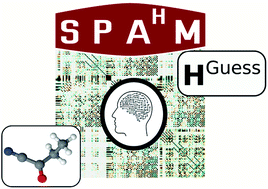SPAHM: the spectrum of approximated Hamiltonian matrices representations†
Abstract
Physics-inspired molecular representations are the cornerstone of similarity-based learning applied to solve chemical problems. Despite their conceptual and mathematical diversity, this class of descriptors shares a common underlying philosophy: they all rely on the molecular information that determines the form of the electronic Schrödinger equation. Existing representations take the most varied forms, from non-linear functions of atom types and positions to atom densities and potential, up to complex quantum chemical objects directly injected into the ML architecture. In this work, we present the spectrum of approximated Hamiltonian matrices (SPAHM) as an alternative pathway to construct quantum machine learning representations through leveraging the foundation of the electronic Schrödinger equation itself: the electronic Hamiltonian. As the Hamiltonian encodes all quantum chemical information at once, SPAHM representations not only distinguish different molecules and conformations, but also different spin, charge, and electronic states. As a proof of concept, we focus here on efficient SPAHM representations built from the eigenvalues of a hierarchy of well-established and readily-evaluated “guess” Hamiltonians. These SPAHM representations are particularly compact and efficient for kernel evaluation and their complexity is independent of the number of different atom types in the database.



 Please wait while we load your content...
Please wait while we load your content...